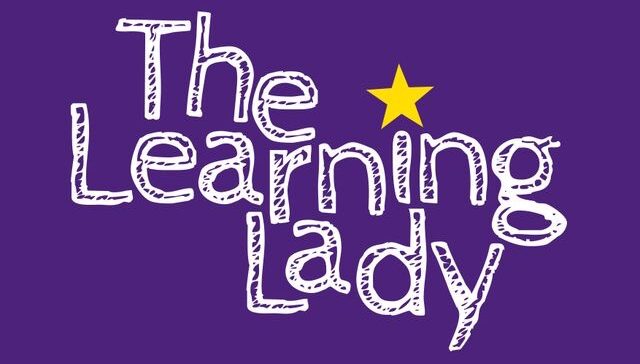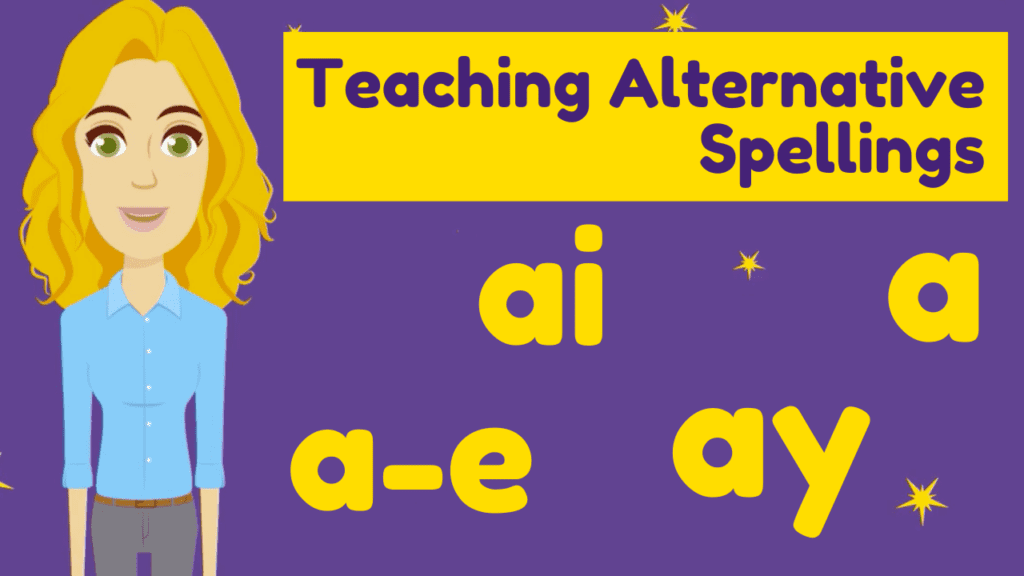
The most obvious alternative spelling to AI is AY. This alternative to AI is usually found at the end of words. Words like way, day, say, or longer words like play, stay or holiday.
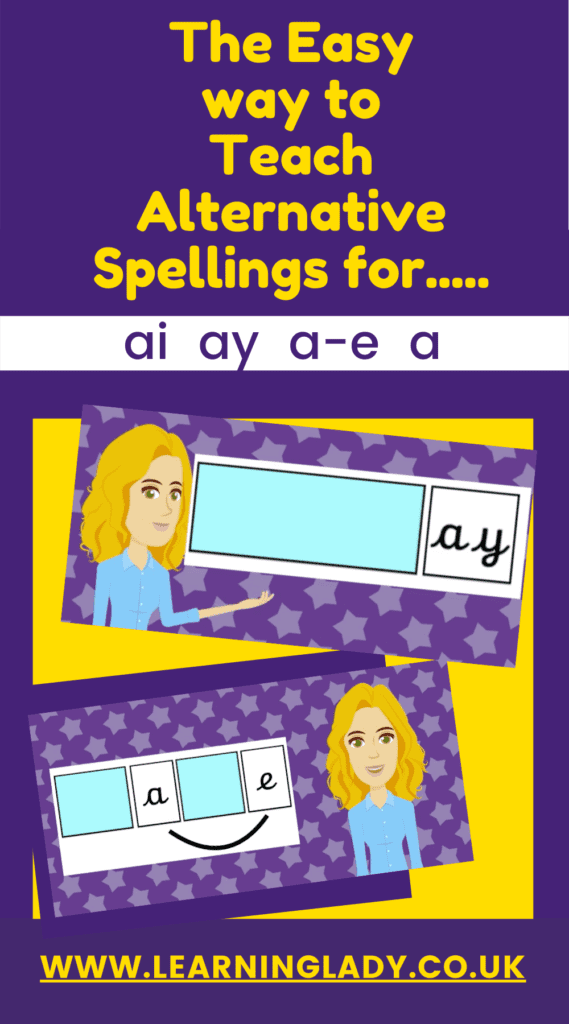
Try to avoid exception words like crayon, or words with suffixes, like playing. These can make it really confusing for the children. The children need to be really secure on the spelling rule, before you start adding exceptions.
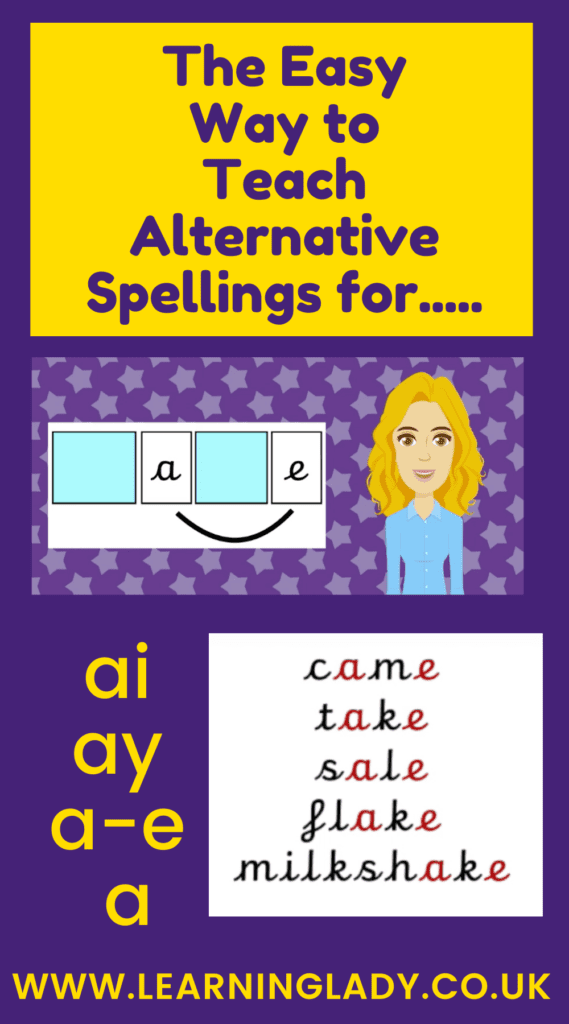
The next alternative for the AI sound or phoneme is the split digraph A-E. This is when two letters , the A and E, are making an AI sound, but they are split, with a letter squeezed in the middle. The A-E split digraph is common, and you’ll recognise it in words like came, take, sale, flake, or longer words like milkshake.
Try to avoid exceptions like have, and words like age, because the children won’t have been taught the G representing the J sound at this stage.
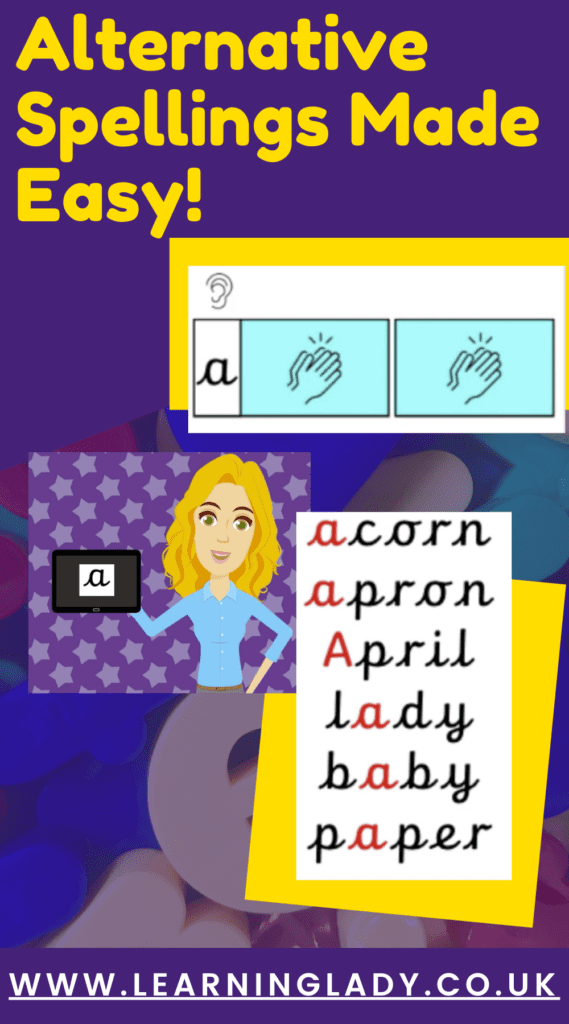
The final rule for teaching the AI phoneme or sound, is when to pronounce the letter A by its sound, and when to pronounce it by its letter name.
Before you teach this rule, the children will need to have basic understanding of syllables as beats in a word.
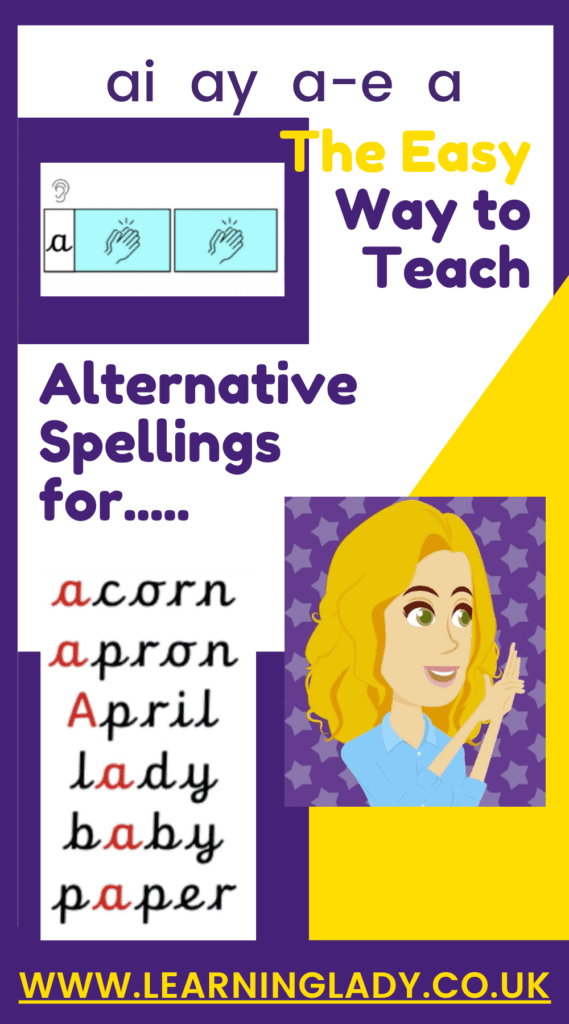
When the children see an A at the beginning of a 1 syllable word, like ant, they need to use the letter sound ‘a’, rather than the letter name.
When the children see an A at the beginning of a two syllable word, like acorn or apron or April, or near the beginning of a two syllable word, like lady, baby, or paper, they need to use the letter name, rather than the letter sound.

Learning Lady Top Tip
If you’re wondering how to organise these Phase 5 spelling rules and alternatives in your teaching, the best piece of advice is not to overwhelm the children by teaching them all in one go.
Teach one AI Phase 5 spelling alternative thoroughly, then investigate other sound or phoneme families before revisiting AI again. This is so important because it gives the children time to practise and apply their prior learning, before building on this with a new rule for the same sound.
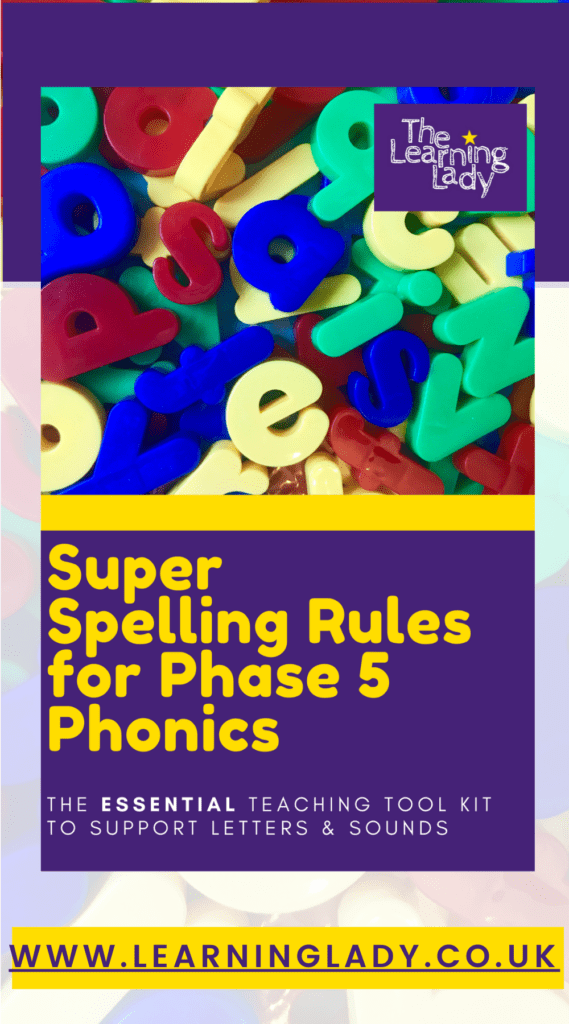
For all of the spelling rules and alternative pronunciations of sounds you’ll need to teach Letters and Sounds Phase 5 SPECTACULARLY WELL, Download my FREE PDF Super Spelling Rules guide now. It includes:
Easy, plain English, explanations of all of the rules you’ll need
Lists of words which prove each rule
Exceptions to avoid
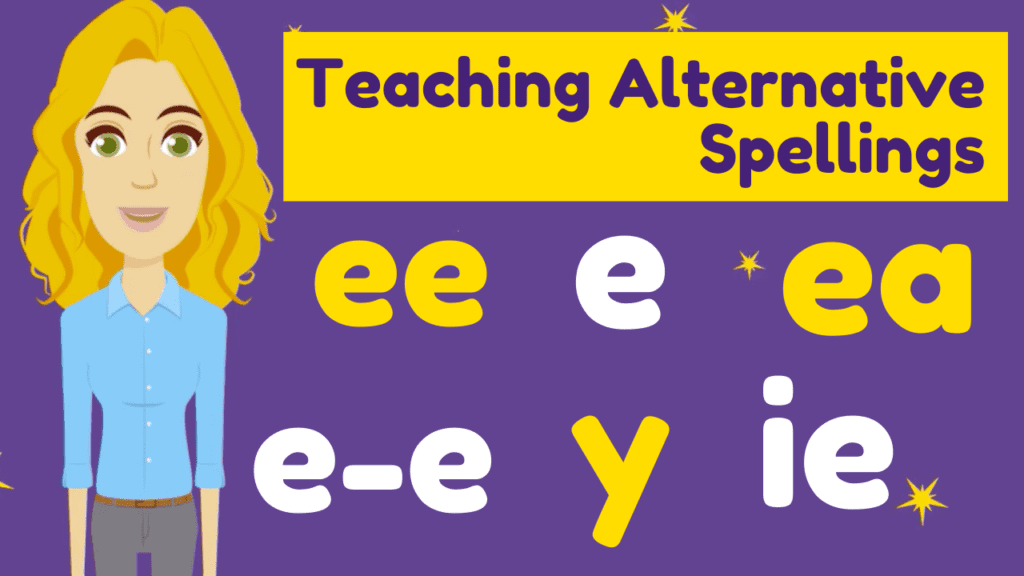
Don’t forget there are more spelling rules and alternative pronunciations to master when you’re explaining Phase 5 Phonics.
Check out these rules to teach the most common spelling choices in Phase 5 SPECTACULARLY WELL!
Alternative spellings and rules to teach the AI sound
Spelling alternatives for the EA phonics sound Phase 5
Alternative spellings for IGH phonics in Phase 5
Alternative spellings for IR words in phonics Phase 5
